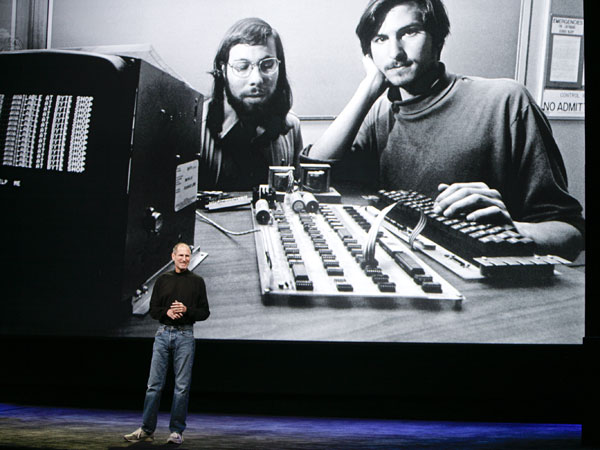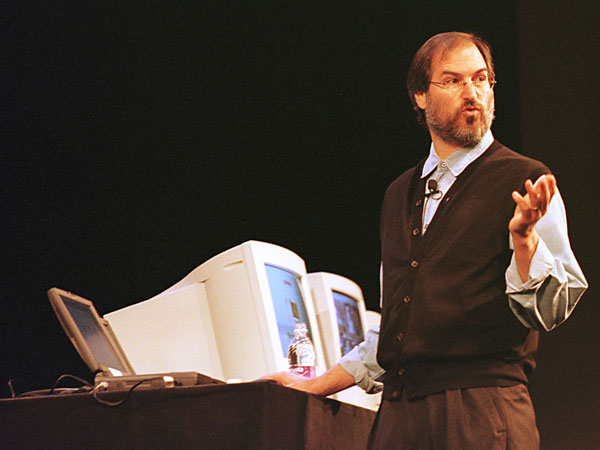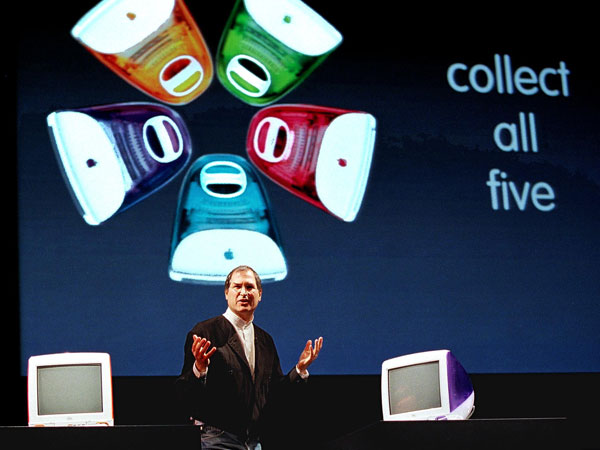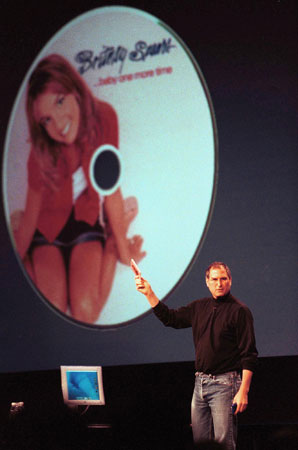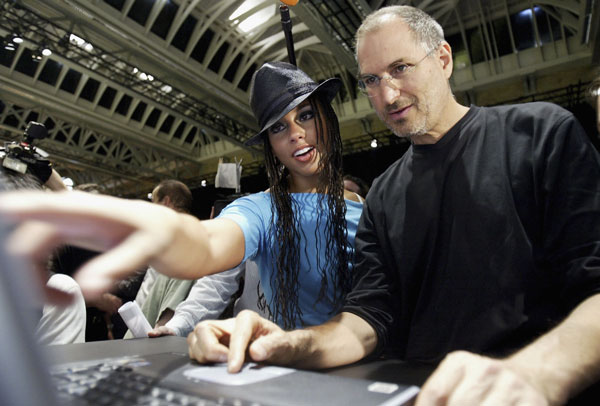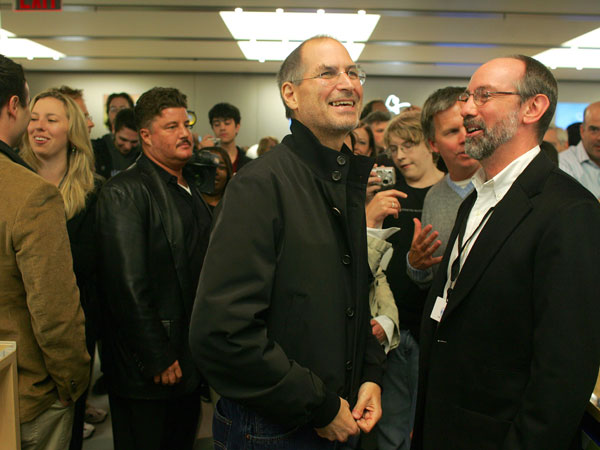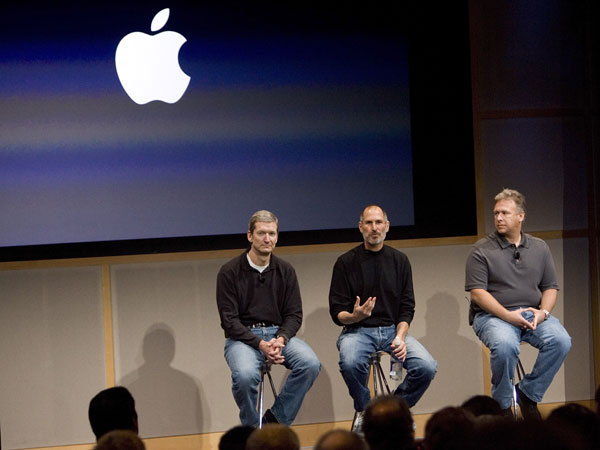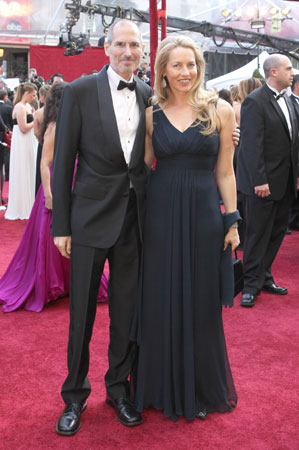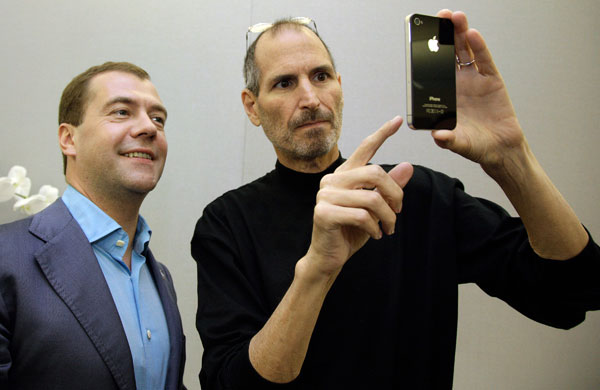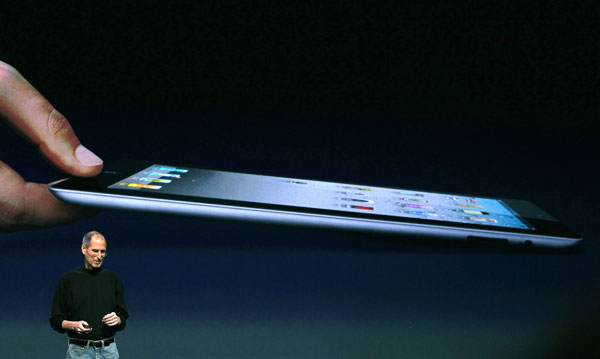The Man Who Invented Our World
More than anyone else, Steve Jobs shaped modern technology—and modern life.
I saw the news of Steve Jobs’ death on a device that he invented—the iPhone—and I’m writing on another machine that he willed into being: the graphical interface computer. I happen to be using a PC running Windows, with generic hardware I put together myself; technically, only my keyboard was made by Apple. But none of that matters. Just like the touch-screen smartphone and, now, the tablet computer, the PC that you and I use every day became ubiquitous thanks mainly to this one man. I’ll go further: Whether you’re yearning for a Kindle Fire or a BlackBerry PlayBook, whether you play Angry Birds on an iPod Touch or Google’s Nexus Prime, whether you’re a Mac or a PC, you’ve succumbed to Steve Jobs’ master plan.
You may consider this praise too broad. After all, the tech industry is unstoppable. Machines progress thanks to the work of thousands of programmers, hardware engineers, assemblers, and research scientists at hundreds of large and small firms in Silicon Valley and around the world. Jobs, who quit college and was never trained in software or hardware engineering, lacked much of the formal expertise needed to power the computer revolution. Jobs didn’t make microchips go faster, he didn’t increase the capacity of hard drives, he didn’t invent optical storage drives, bitmapped graphics, cellular radios, Ethernet, or even the mouse. If Jobs wasn’t around, we’d have had all of these advances anyway—and people like Bill Gates, Andy Grove, Michael Dell, and Larry Page would have turned these technologies into computers, phones, and music players.
If Steve Jobs hadn’t been around, what might that stuff have looked like? To appreciate how Jobs changed what you do every day, you’ve only got to look at how entire industries shifted after Jobs pushed Apple into them. Think of the BlackBerry, the Palm Pilot, the Creative Nomad music player, or MS-DOS. These are all perfectly serviceable technologies, things that got the job done. But none of them was transcendent. None was a dream to use, and most were a pain.
More importantly, they all represented the logical, Darwinian end point of major technological trends. The BlackBerry is the obvious result of smaller processors, smaller screens, and better cellular radios. If Research in Motion hadn’t created it, someone else would have. The iPhone, though, was not an inevitability. Every single thing about that device was the product of deep research, testing, and unyielding refinement. The “Jesus phone” underlines Jobs’ place at the head of this business. While every other company in tech has been shaped by the forces of technological evolution, with their products getting better as chips got faster and cheaper, Jobs had no patience for evolution. He was the intelligent designer.
Jobs’ best talent was his ability to spot the pain points in every technology he touched. He could look at anything and tell you why it sucked. This became his standard formula for unveiling new products: He would begin by explaining what was awful about the industry he would soon supplant. Old-style smartphones? They were encumbered with buttons that were there whether you needed them or not, and that remained static for every application you used, leaving very little room for a screen. Portable music players? The ones before the iPod stored too few songs, transferred your music too slowly, didn’t catalog your tracks in any useful way, and were too large and ungainly to carry with you. Pre-iPad tablet PCs? If you got him started on those things, you’d be there all day.
There’s a school of Jobs hagiography that suggests he personally invented solutions to all these problems. (This is nicely parodied in a story the Onion once ran, “Frantic Steve Jobs Stays Up All Night Designing Apple Tablet.”) But although Apple assigned his name to hundreds of patents, Jobs wasn’t Apple’s idea man. Rather, his role was to separate other people’s great ideas from their terrible ones—and to refine the best ideas into workable products. He did this, most famously, with the mouse, a gadget he’d encountered on a trip to Xerox’s research facility in Palo Alto in 1979. Jobs instantly saw that it could redefine computing, and he worked feverishly to turn the research into something useful. He cribbed other parts of the Mac from Jef Raskin, a legendary computer interface expert at Apple who’d come up with several of the key concepts for graphical computing.
But Jobs didn’t just grab other people’s best concepts. He also drew inspiration from other, more far-flung domains. After dropping out of Reed College when he was 17, Jobs bummed around campus looking for something to do. He’d heard about Reed’s strong calligraphy program, so he decided to take some classes. “I learned about serif and sans-serif typefaces, about varying the amount of space between different letter combinations, about what makes great typography great,” he said in a commencement speech at Stanford in 2005 (which is one of the best accounts of his life you’ll ever see). “It was beautiful, historical, artistically subtle in a way that science can't capture, and I found it fascinating.”
He added:
None of this had even a hope of any practical application in my life. But ten years later, when we were designing the first Macintosh computer, it all came back to me. And we designed it all into the Mac. It was the first computer with beautiful typography. If I had never dropped in on that single course in college, the Mac would have never had multiple typefaces or proportionally spaced fonts. And since Windows just copied the Mac, it's likely that no personal computer would have them. If I had never dropped out, I would have never dropped in on this calligraphy class, and personal computers might not have the wonderful typography that they do. Of course it was impossible to connect the dots looking forward when I was in college. But it was very, very clear looking backwards 10 years later.
Jobs’ logic is hard to argue with here. If he hadn’t brought proportional typefaces to the Mac—if the Mac had never existed—it’s difficult to think of anyone else who would have. Microsoft? Dell? No way. This sounds like a small thing—so what if we had ugly fonts?—but you could make a similar argument for everything else Jobs pushed for, from touch-screen interfaces to the App Store model of downloading software. These things would never have hit the mainstream if he hadn’t come up with them first.
I’ve seen Jobs dozens of times as a reporter. I’ve gotten to ask him questions, and I’ve had a chance to see him chat up VIPs at product demo stations after he’s unveiled something great. I’ve read pretty much everything written about him, and spoken to many people who’ve worked with him. Still, he’s always been a mystery to me. I’ve never been able to understand just why he was at good at spotting and creating the best things in tech.
Last weekend my wife and I were taking a walk with our baby not far from downtown Palo Alto, and I realized that we weren’t too far from Jobs’ house. I’d only ever seen it from the car, so I wanted to see if we could get closer. Part of this was plain nosiness. But I was also curious to see if I could somehow get closer—to get some insight into some part of his world. We walked a bit out of our way, then turned a corner onto Jobs’ street. There were some big guys who looked like security guards outside, as well as Jobs’ license-plate-free silver Mercedes. It’s a beautiful house, though nothing as grand as the other multimillion-dollar residences on his street. The most obviously Jobsian touch were the half dozen apple trees in the yard. We walked slowly past the house, but I wasn’t feeling any closer to Jobs.
Video: Steve Wozniak Remembers Steve Jobs
But I was going about it wrong. For decades, Jobs was nearly alone in the computer industry in his belief that it was better for users if a single company made every part of every device. In an age ruled by mediocre modularity—where one company makes your hardware, another makes your software, and another bundles ads and crapware onto the machine—Jobs saw electronics as an expression of a fierce, if inscrutable, artistic vision.
It’s that vision that defined him, and perhaps it’s only through the products his company made that we can ever hope to understand him. The major touchstones of the Jobs aesthetic are obvious—in hardware, software, retail, marketing, and even office design, he believed in elegance and minimalism. From a broader perspective, he believed in fighting against inertia. This was true of his plan for Apple—in 1997, he wouldn’t stand for its obsolescence—as well as for the gadgets he delivered. When I look at my iPhone, my iPad, my MacBook Air, or the beautiful Apple keyboard that I’m typing on now, I see more of Jobs than I could have ever hoped to glimpse outside his house. These products came about because one man understood that machines didn’t have to be the way they were. Steve Jobs didn’t just want technology to change. He made it happen, and thanks to him the world is a much different, much better place.
